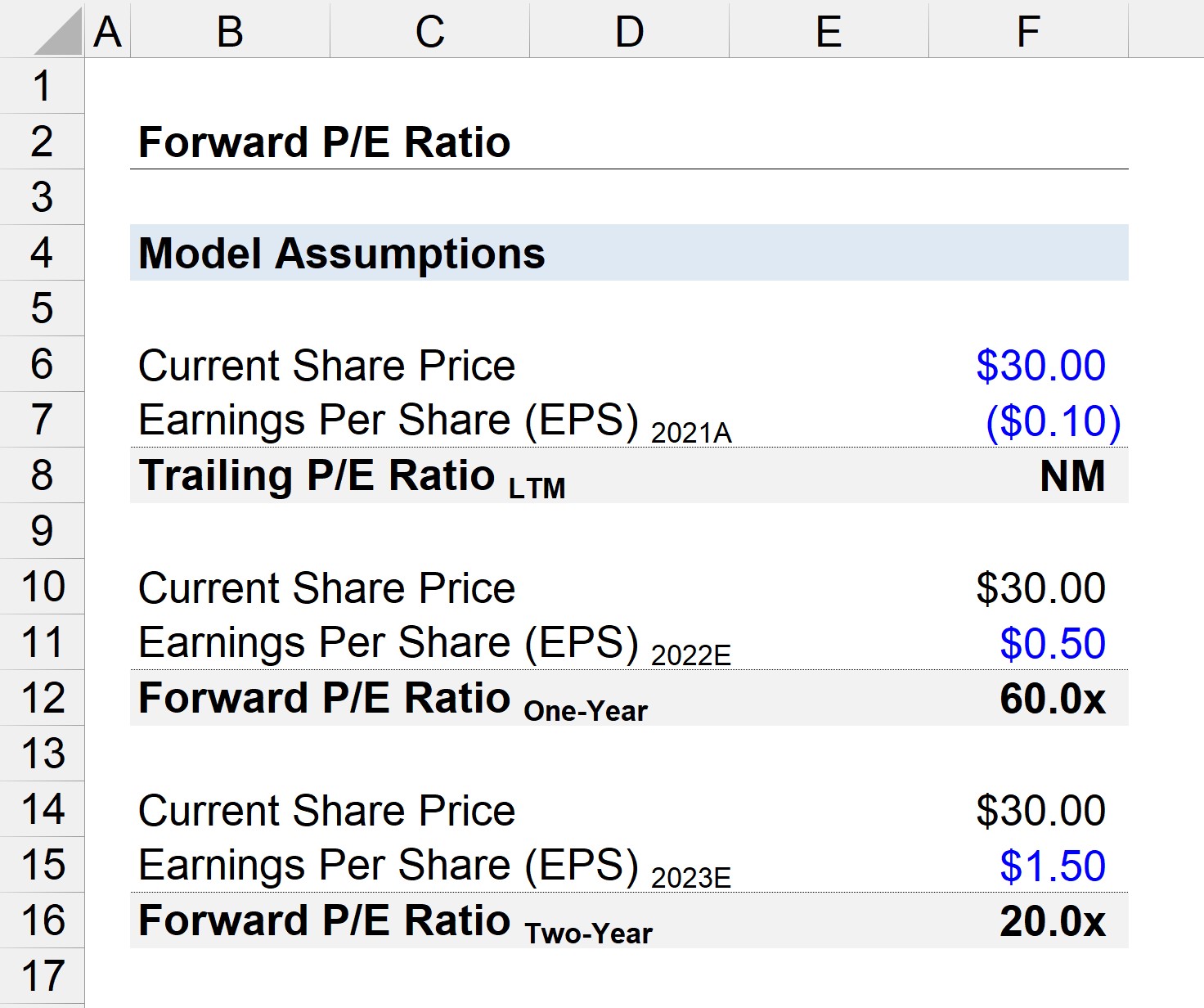

Finance
What Is MOASS Stocks
Published: January 18, 2024
Discover the meaning of MOASS stocks and how they can impact the finance industry. Stay informed with our comprehensive guide on MOASS stocks.
(Many of the links in this article redirect to a specific reviewed product. Your purchase of these products through affiliate links helps to generate commission for LiveWell, at no extra cost. Learn more)
Table of Contents
Introduction
Investing in the stock market can be an exciting yet challenging endeavor. As an investor, you are constantly seeking opportunities to maximize your returns and grow your wealth. One term that has gained significant attention in recent years is MOASS stocks. MOASS, which stands for “Mother of All Short Squeezes,” refers to a situation in which a heavily shorted stock experiences a rapid and significant increase in its share price.
The concept of MOASS stocks gained widespread recognition with the GameStop saga in early 2021. Retail investors, organizing themselves on online platforms like Reddit’s WallStreetBets, orchestrated a short squeeze on GameStop’s stock, causing its value to skyrocket and inflicting significant losses on short sellers.
While the GameStop incident put MOASS stocks in the spotlight, it’s important to understand that this phenomenon is not limited to a single company. MOASS stocks can occur in any heavily shorted stock, where the combination of buying pressure from retail investors and short sellers scrambling to cover their positions creates a surge in share price.
In this article, we will delve into the definition of MOASS stocks, explore the factors that contribute to their occurrence, examine historical examples, discuss the risks and challenges associated with them, and provide strategies for investing in MOASS stocks.
Disclaimer: Investing in MOASS stocks can be highly volatile and risky. It’s important to conduct thorough research and consult with a financial advisor before making any investment decisions.
Definition of MOASS Stocks
MOASS, or Mother of All Short Squeezes, is a term used to describe a situation in the stock market where a heavily shorted stock experiences a rapid and significant increase in its share price. Short selling involves borrowing shares of a stock from a broker and selling them with the expectation that the price will decline. The short sellers hope to buy back the shares later at a lower price to return them to the broker, profiting from the difference.
When a stock is heavily shorted, it means that there are a significant number of short positions on that particular stock. These short positions can create a potential scenario for a MOASS. A short squeeze occurs when the price of a stock starts to rise, forcing short sellers to cover their positions by buying back the stock. As they scramble to buy back the shares, the increased demand pushes the price even higher, creating a feedback loop of buying pressure and further price escalation.
The term “Mother of All Short Squeezes” gained popularity during the GameStop frenzy in early 2021. Retail investors from online communities like Reddit’s WallStreetBets rallied together to drive up the price of GameStop’s stock, inflicting significant losses on hedge funds and other institutional investors who held short positions on the stock.
A MOASS stock is not limited to a specific industry or company. It can occur in any heavily shorted stock with enough buying pressure to trigger a short squeeze. In some cases, MOASS stocks can also attract other investors who see the opportunity for quick profits, further fueling the price surge.
It’s important to note that MOASS stocks are typically characterized by their volatility and unpredictable nature. The rapid increase in share price can happen over a short period, sometimes even within a single trading day. This makes it crucial for investors who want to trade MOASS stocks to be vigilant and closely monitor the market.
Factors Contributing to MOASS Stocks
Several factors contribute to the occurrence of MOASS stocks. Understanding these factors can provide insights into why certain heavily shorted stocks experience a significant surge in share price. Here are some key factors that contribute to the MOASS phenomenon:
- Short Interest: The level of short interest in a stock is a crucial factor in the potential for a MOASS. When a stock has a high short interest, it means there are a significant number of short positions that need to be covered if the stock’s price starts to rise. The higher the short interest, the greater the pressure on short sellers to close their positions, creating a potential squeeze.
- Market Sentiment: Market sentiment plays a crucial role in determining the likelihood of a MOASS. If there is a strong belief among retail investors that a particular stock is undervalued or has strong growth potential, it can trigger a wave of buying interest. Social media platforms and online communities can amplify market sentiment and attract a large number of retail investors, creating a collective buying force that drives up the stock price.
- Lack of Liquidity: Stocks with low liquidity are more susceptible to experiencing a MOASS. When a stock has low trading volume and limited market participants, it becomes easier for a surge in buying pressure to quickly drive up the share price, especially if there is a significant number of short positions that need to be covered.
- Short-Squeeze Catalysts: Certain events or catalysts can trigger a short squeeze and contribute to the MOASS phenomenon. These catalysts can include positive news announcements, strong earnings reports, or unexpected events that fundamentally change the outlook for the company. When short sellers are caught off guard by such catalysts, they may be forced to cover their positions quickly, leading to a rapid increase in price.
- Retail Investor Participation: The involvement of retail investors, particularly organized groups on online forums and social media platforms, has played a significant role in recent MOASS stocks. When retail investors collectively rally behind a stock, it can generate substantial buying pressure, overwhelming short sellers and driving up the share price.
It’s important to note that while these factors contribute to the occurrence of MOASS stocks, they do not guarantee a successful short squeeze every time. Market dynamics, investor sentiment, and other external factors can impact the outcome of a MOASS situation.
Historical Examples of MOASS Stocks
The phenomenon of MOASS stocks has occurred in various instances throughout stock market history. These examples highlight the potential for heavily shorted stocks to experience significant price surges due to a combination of factors and market dynamics. Here are a few notable historical examples of MOASS stocks:
- GameStop (GME): The GameStop saga in early 2021 is perhaps the most well-known example of a MOASS stock. Reddit’s WallStreetBets forum organized a massive short squeeze on GameStop’s stock, driven by retail investors. The coordinated buying frenzy caused the stock price to skyrocket, resulting in enormous losses for short sellers and attracting widespread media attention.
- Volkswagen (VOWGY): In 2008, Volkswagen experienced a MOASS event when Porsche disclosed its intentions to increase its stake in the company. As a result, a substantial number of short sellers had to cover their positions, causing Volkswagen’s stock price to surge dramatically. This unexpected development caught many market participants off guard and led to massive losses for shorts.
- Tesla (TSLA): Tesla has been a subject of short-sellers for years. The electric vehicle company’s stock experienced multiple short squeezes, particularly in 2020 and early 2021. Positive news announcements, strong delivery numbers, and Elon Musk’s influence on social media have contributed to significant price surges and short squeezes on Tesla’s stock.
- Crypto Shorts: While not a traditional stock, the cryptocurrency market has also witnessed MOASS-like movements in heavily shorted cryptocurrencies. Certain digital assets, such as Bitcoin and Ethereum, have experienced rapid price increases due to short squeezes caused by coordinated buying pressure from retail investors and market dynamics.
- Penny Stocks: Penny stocks, often characterized by low liquidity and high volatility, have the potential to experience MOASS-like moves. These stocks, with high short interest and limited trading volume, can be more prone to rapid price swings when significant buying pressure enters the market, leading to short squeezes.
These examples demonstrate that MOASS stocks can occur across various sectors and markets, highlighting the importance of understanding market dynamics and the potential risks involved in trading heavily shorted stocks.
Risks and Challenges Associated with MOASS Stocks
While MOASS stocks can present lucrative opportunities for investors, they also come with significant risks and challenges. It’s essential to be aware of these factors before considering trading or investing in heavily shorted stocks. Here are some risks and challenges associated with MOASS stocks:
- Volatility: MOASS stocks are known for their extreme volatility. The rapid and significant price movements can make it challenging to predict or time entry and exit points. Prices can spike within a short period, but they can also plummet just as quickly. It’s crucial to have a clear risk management strategy and be prepared for sudden shifts in market sentiment.
- Limited Duration: MOASS stocks often experience a short-lived surge in price. The significant price increase usually occurs when short sellers are scrambling to cover their positions. Once the short squeeze subsides, the stock may experience a sharp decline, potentially eroding any gains made during the squeeze. Timing is crucial, and investors must be prepared to exit their positions at opportune moments.
- Market Manipulation: MOASS stocks can attract attention from market manipulators who exploit the situation for personal gain. These manipulators can create artificial demand, exaggerate the stock’s potential, or spread false information, leading to a distorted market. It’s important to stay cautious and rely on reliable sources of information and analysis.
- Liquidity Challenges: Stocks with low liquidity can pose additional challenges when trading MOASS stocks. The limited number of buyers and sellers can lead to wider bid-ask spreads, making it harder to execute trades at desired prices. Additionally, it may be more difficult to exit a position quickly when there are fewer participants in the market.
- Regulatory and Legal Risks: Market manipulation attempts, especially in high-profile MOASS situations, can attract regulatory scrutiny. Regulatory bodies may investigate for any potential violations, increasing the legal risks associated with trading in these stocks. Investors must stay informed about the rules and regulations governing the markets and ensure compliance with applicable laws.
It’s important to remember that participating in MOASS stocks requires careful consideration and risk management. Proper due diligence, understanding of market dynamics, and disciplined trading strategies are crucial to navigate the potential risks and challenges associated with these stocks.
Strategies for Investing in MOASS Stocks
Investing in MOASS stocks requires careful planning, risk management, and a well-defined strategy. While there is no foolproof approach, here are some strategies to consider when investing in heavily shorted stocks:
- Thorough Research: Before investing in a MOASS stock, conduct thorough research on the company, its fundamentals, industry trends, and potential catalysts. Understand the reasons behind the stock’s heavy short interest and evaluate whether the short squeeze potential is warranted. Utilize reliable sources of information and analysis to guide your investment decisions.
- Monitor Sentiment and Social Media: Keep a close eye on market sentiment and social media discussions surrounding the stock. Retail investor communities can play a significant role in driving buying pressure and triggering short squeezes. However, be cautious of hype and manipulated information. Use social media as a source of sentiment but combine it with your own analysis to make informed decisions.
- Set Clear Entry and Exit Points: Establish clear entry and exit points based on your risk tolerance and investment goals. Determine the maximum amount you are willing to invest and ensure you have a predefined plan for when to exit the position. Emotions can run high during MOASS situations, so having a disciplined approach can help mitigate risks.
- Manage Risk: MOASS stocks are inherently risky, so it’s crucial to manage your risk effectively. Consider using stop-loss orders to limit potential losses and protect your investment capital. Diversify your portfolio to mitigate the impact of any single MOASS stock on your overall portfolio performance.
- Stay Informed and Adapt: Stay updated with the latest news, company announcements, and market trends related to the MOASS stock you are investing in. Be prepared to adapt your strategy based on changing circumstances. Market dynamics and investor sentiment can shift quickly, so staying informed and flexible is important.
- Seek Professional Advice: If you are inexperienced or uncertain about trading MOASS stocks, consider seeking advice from a financial advisor or a professional with expertise in this area. They can provide valuable insights, help you navigate the risks, and guide you in making informed investment decisions.
Remember, investing in MOASS stocks carries significant risks, and individual results may vary. It’s crucial to assess your risk tolerance, conduct thorough research, and develop a robust strategy that aligns with your financial goals and objectives.
Conclusion
MOASS stocks, or Mother of All Short Squeezes, have captured the attention of investors and traders alike. The phenomenon of heavily shorted stocks experiencing rapid surges in share price can present lucrative opportunities, but it’s crucial to understand the risks and challenges involved.
In this article, we explored the definition of MOASS stocks and the factors that contribute to their occurrence. We discussed historical examples, including the notable GameStop saga, as well as risks such as volatility, limited duration, market manipulation, liquidity challenges, and regulatory risks associated with MOASS stocks.
To navigate these risks, we offered strategies for investing in MOASS stocks, such as conducting thorough research, monitoring sentiment and social media, setting clear entry and exit points, managing risk effectively, staying informed and adaptable, and seeking professional advice if needed.
It’s important to remember that investing in MOASS stocks can be highly volatile and speculative. Prices can skyrocket and crash within a short span of time, leading to substantial gains or losses. It requires careful analysis, risk management, and a disciplined approach.
Ultimately, investing in MOASS stocks should be done with caution and with a thorough understanding of the underlying stocks and market dynamics. It is advisable to consult with a financial advisor or professional who specializes in these types of investments to assess your individual situation and determine if it aligns with your investment goals and risk tolerance.
Remember, while the allure of quick gains in MOASS stocks can be tempting, it’s essential to approach them with a realistic perspective and a long-term investment strategy based on research, analysis, and risk management principles.














